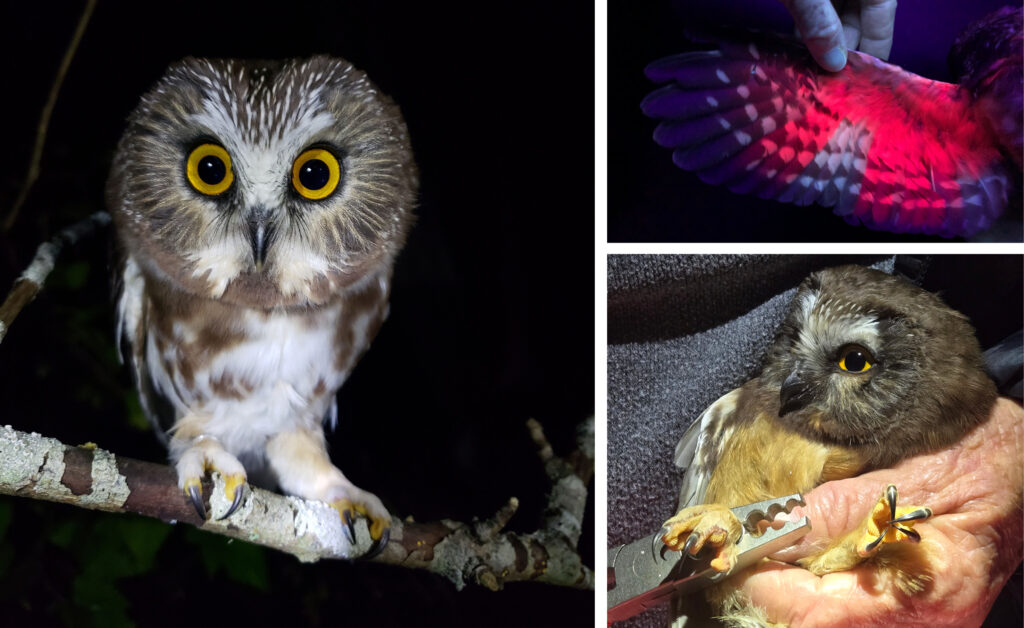Words Ann Nightingale, Rocky Point Bird Observatory
Photos Rocky Point Bird Observatory
Most of us have become familiar with the “who cooks for you” call or the monkey-like screams of the Barred Owl, a species that was first recorded in Victoria in 1969, but did you know there is a smaller owl that is much more common – at least every fall? The Northern saw-whet owl, only about the size of a medium beverage cup, moves through the forests of Vancouver Island each fall in spectacular numbers.
Since 2002, staff and volunteers at Rocky Point Bird Observatory (RPBO) have been intercepting these intriguing owls in Metchosin before they make the non-stop flight across the Juan de Fuca Strait. In doing so, the research team has learned many things about them.
- Vancouver Island appears to act like a funnel for the birds as they move south. RPBO routinely encounters more northern saw-whet owls than most other owl monitoring stations in North America. In 2017, 1,850 of these cuties were caught, banded and released over a six-week period. That’s about double the normal amount and was likely due to the fires in the interior that year pushing the birds to the coast.
- Their new feathers glow pink under ultraviolet light. Like many birds of prey, northern saw-whet owls replace only some of their wing feathers each year. Newly grown feathers contain a pigment called porphyrin, which glows bright pink under black (UV) light. The pattern of the pink feathers helps determine how old the owl is.
- Northern saw-whet owls can capture prey almost half their size! Their most common foods in our area are deer mice and Townsend’s voles. While they can swallow the mice whole, the voles may serve for two or three meals.
- Some of the northern saw-whet owls take the longer, scenic route south. Tracking using radio tags showed that at least some prefer to island hop across the Gulf and San Juan islands on their trip south rather than take the direct route across the Juan de Fuca Strait.
- These small owls can fly long distances in a short time. A young male tagged at Pedder Bay in September 2014 was recaught by researchers in Boise, Idaho, just 18 days later. That’s about 800 km if he flew in a straight line. (Hint: they don’t fly in a straight line!) He weighed half a gram more when they recaught him than he did when he left Victoria.
Now that you are intrigued, here’s how to go about finding a northern saw-whet owl this fall.
Being nocturnal, these owls roost in the daytime. They often settle into thick vegetation like blackberry patches, holly trees and hedges. Listen for robins and other birds sounding very angry. They may have found one for you, but it might not be easy to see.
Right around dusk and dawn, you may be able to hear them call. Their “hoot” sounds more like a “toot” of a whistle or recorder. They make a variety of other sounds as well. You can find recordings on the eBird or Merlin apps to study the calls.
Between mid-September and the end of October, visit RPBO at the Pedder Bay Marina during owl monitoring. There is no guarantee, but it is definitely the most likely way to get to see one up close. Visit the RPBO website (www.rpbo.org) for more information on reserving a spot. Be prepared for a cuteness overload!




